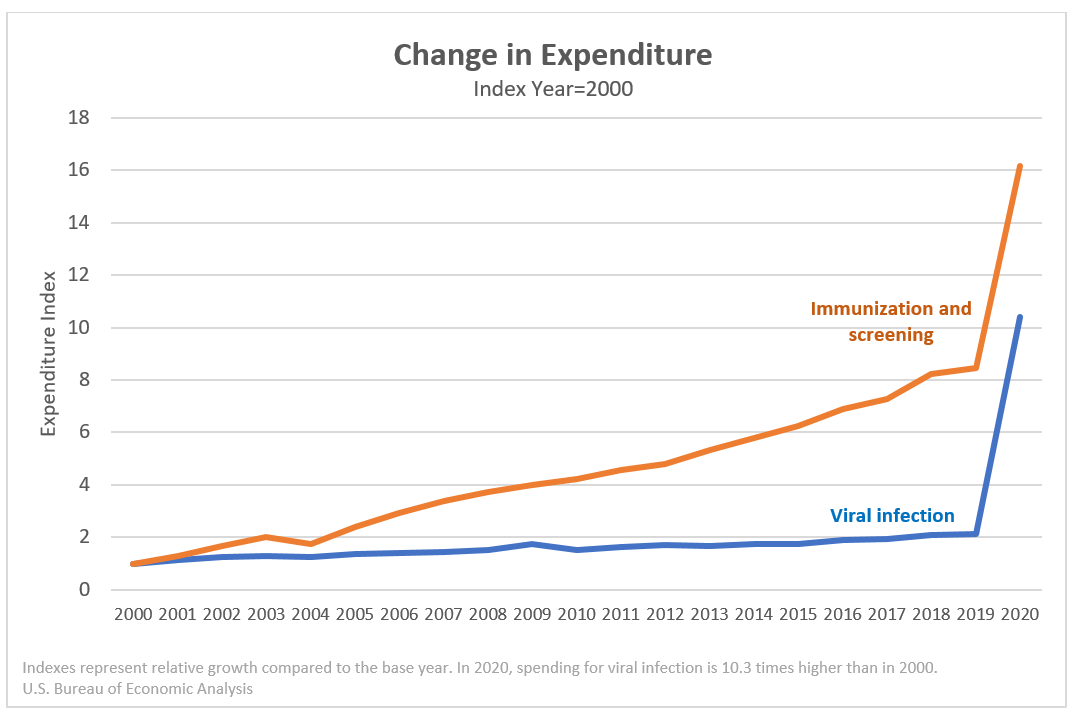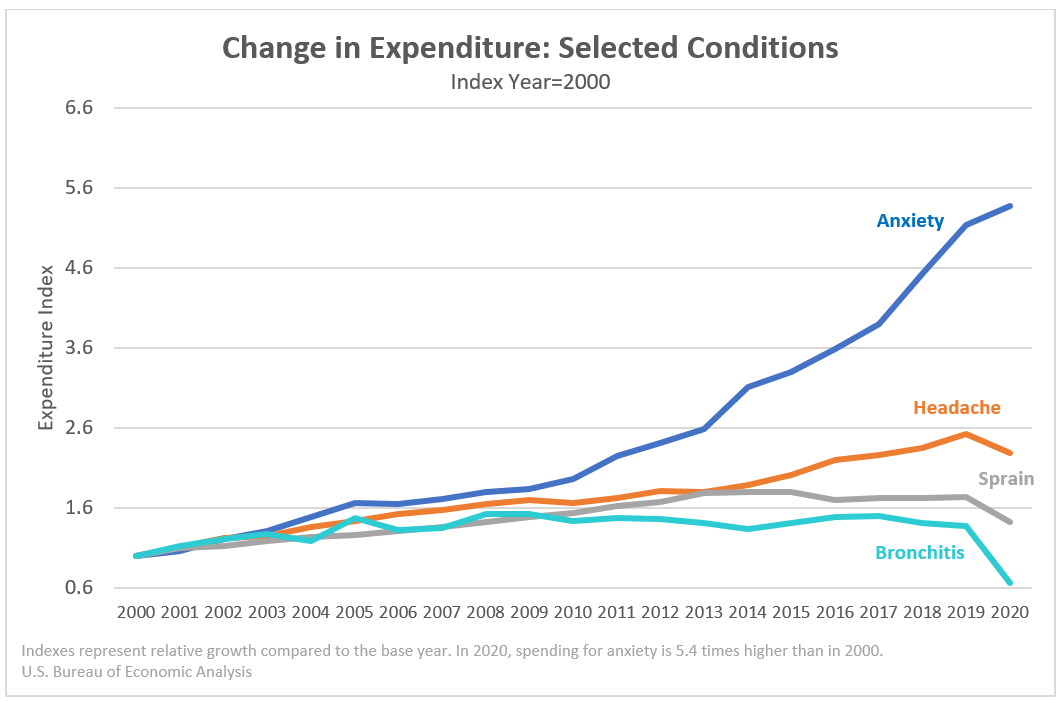The Bureau of Economic Analysis today released estimates for 2020 that measure health care spending by medical condition. In the first year of the COVID-19 pandemic, spending on infectious and parasitic diseases amounted to more than $222 billion, growing $83.3 billion over 2019, according to the statistics in BEA’s Health Care Satellite Account.
However, spending decreased for 15 of the account’s 18 disease categories in 2020, likely reflecting temporary closures of non-emergency health care settings because of the pandemic and an increase in patients postponing non-emergency care.
- Spending on circulatory conditions, such as high blood pressure and heart attack, fell by $26 billion, or 9.0 percent.
- Spending on musculoskeletal conditions, such as osteoarthritis and rheumatoid arthritis, also fell by $26 billion dollars, or 10.4 percent.
- Spending on treating cancers fell by less: $4.3 billion, or 2.5 percent.
- The 59.6 percent increase in spending on infectious diseases was largely driven by spending on viral infections and on immunization and screening. Immunization and screening includes COVID-19 testing and COVID-19 vaccines that entered the market in December 2020.
The health care statistics include more than 200 detailed categories. Some interesting examples: Spending on bronchitis, headaches, and sprains decreased in 2020, while spending on anxiety continued an upward trend that started prior to 2019.
Find the newly released health care statistics, including 2020 estimates and updated estimates for 2000-2019, online at bea.gov. (Statistics in this blog come from the Blended Account data.)


